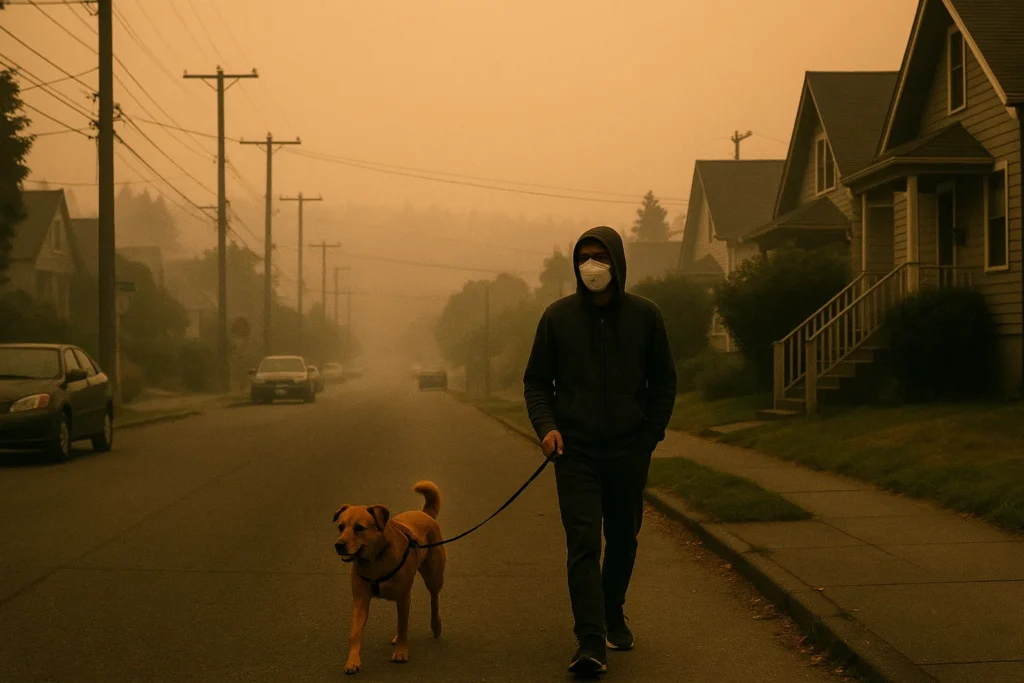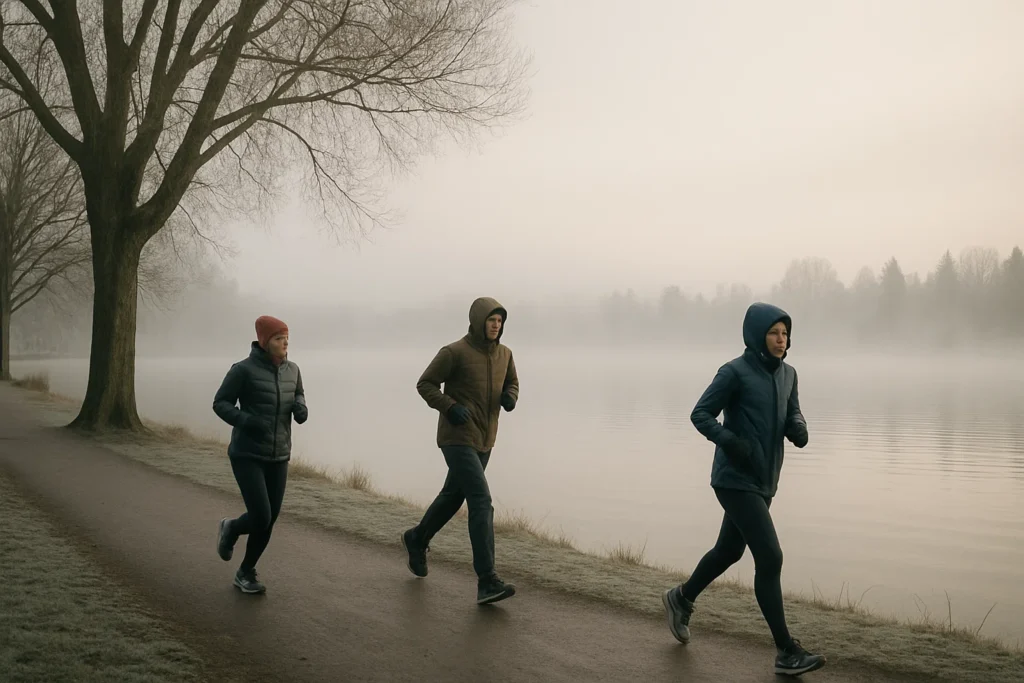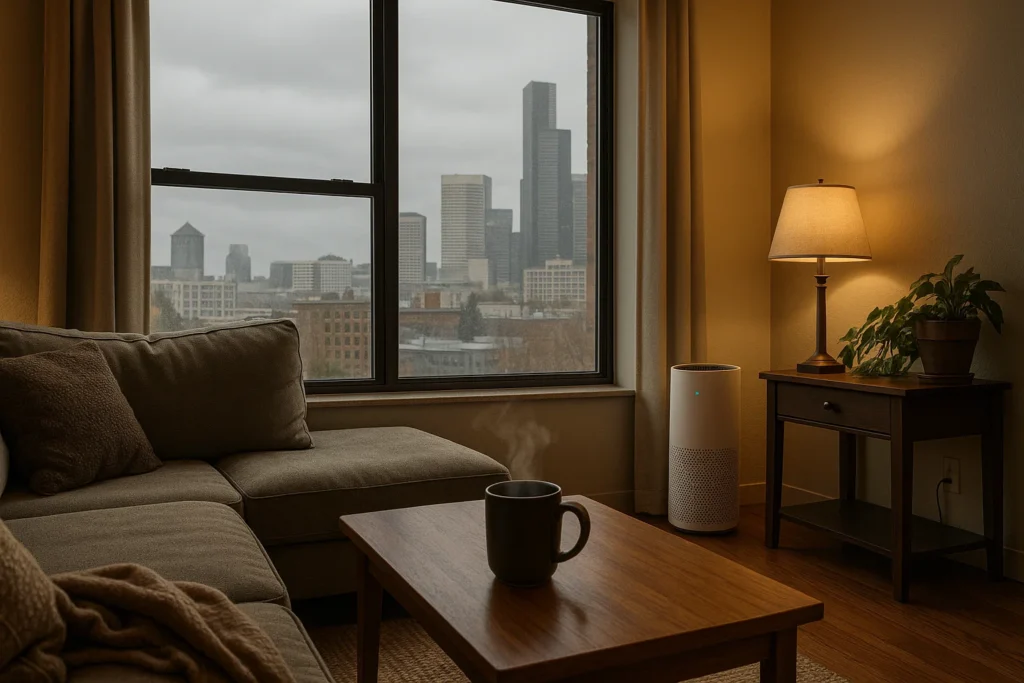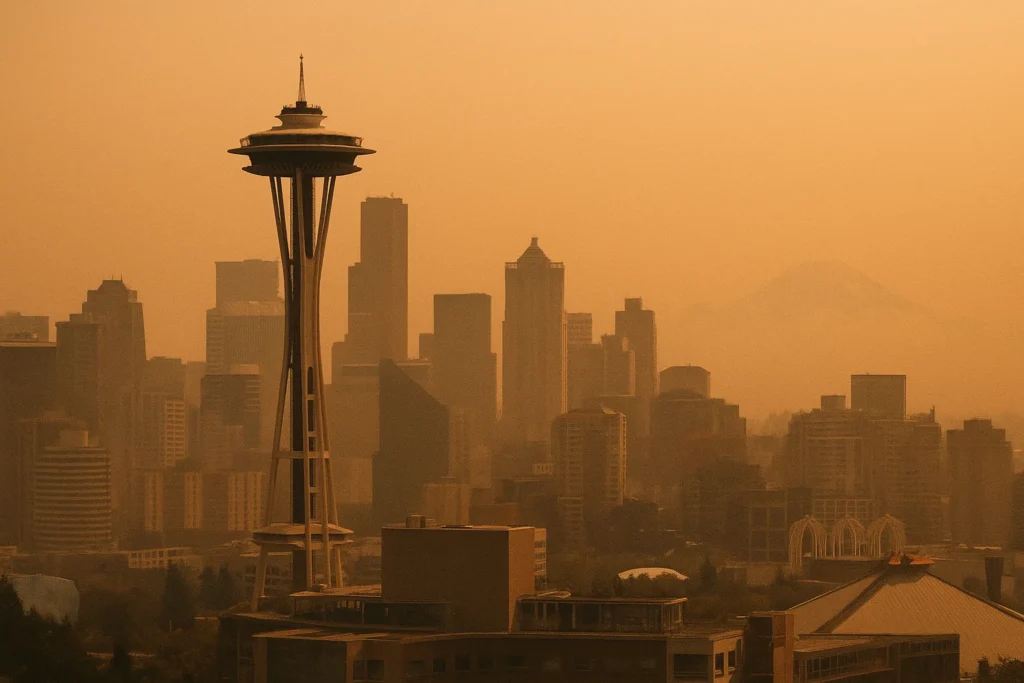Introduction:to Seattle Air Quality
Ah, Seattle Air Quality The city of coffee, rain, indie bands, and more Subarus than you can count. It’s a place where people wear flannel unironically, where dogs have more hiking experience than most humans, and where every street corner smells like either espresso or sea breeze. But in between sips of oat milk lattes and foggy ferry rides, there’s something in the air we all wish wasn’t — smoke, pollution, allergens, and mystery particulates that sound like something out of a sci-fi novel.
I’ve lived in Seattle for over seven years now, and let me tell you: the air quality here isn’t always the Pinterest-worthy Pacific Northwest dream. Yes, we get our fair share of fresh, pine-scented breezes. But we also deal with wildfire smoke in the summer, surprising levels of pollution during winter inversions, and enough allergens to make you think your sinuses are personally offended by nature.
So, let’s dive into what it’s really like living with Seattle air quality — the good, the bad, and the sneezy.
A Breath of (Sometimes) Fresh Air: The Basics
Seattle is often ranked among the top cities for air quality — when it’s good. Thanks to our coastal location, consistent rain, and surrounding forests, we usually enjoy clean air during much of the year. In fact, I remember moving here from Los Angeles and being blown away by how crisp the air felt.
But as I learned quickly, there’s a seasonal twist to that.
During spring and fall, Seattle can feel like breathing through a Brita filter. You go on a jog and it’s like your lungs are getting a spa day. But summer? Oh boy, summer has started to feel like someone lit a campfire and forgot to invite us.
Wildfire Smoke: A Summertime Guest No One Invited
If you’ve never experienced “smoke season,” let me explain it like this: imagine you’re stuck in a smoky bar from the 80s, but instead of dancing to disco, you’re trying to take your dog out for a walk while wearing an N95 mask.
Wildfires from eastern Washington, Oregon, and even Canada have started to blow their smoke over to Seattle every summer, like clockwork. The air becomes thick and hazy, the sky turns an apocalyptic orange, and you find yourself checking the AQI (Air Quality Index) like it’s your new weather app.

One summer, I had to cancel a camping trip in the Cascades because the AQI hit 200 — officially “very unhealthy.” Instead, I sat indoors, binge-watching Great British Bake Off and imagining what fresh air used to feel like.
Pro tip: If you’re living here or visiting in August, check the wildfire smoke forecast. Seriously, it can sneak up fast.
The AQI Life: Welcome to the Daily Check-In
If you live in Seattle long enough, you’ll start throwing around acronyms like AQI, PM2.5, and VOCs like you’re on a science podcast. Apps like AirVisual, PurpleAir, and IQAir become your best friends.
PM2.5, by the way, refers to tiny particles less than 2.5 microns in diameter that can penetrate deep into your lungs. Sounds fun, right?
Seattleites have become experts in reading the AQI:
- 0–50: “Let’s hike Mount Si today!”
- 51–100: “Might be allergies, might be pollution — bring Claritin just in case.”
- 101–150: “Close your windows, Susan!”
- 150+: “Break out the apocalypse gear.”
Winter Inversions: When Pollution Gets Trapped in a Cloud Hug
Now, you’d think all the rain and mist in Seattle would wash away pollution. And you’d be mostly right. But then winter rolls in with its own kind of air-quality mischief: temperature inversions.
This happens when cold air gets trapped near the ground under a layer of warm air. It’s like a pollutant sandwich. All the car emissions, fireplace smoke, and industrial pollutants get stuck in the lower atmosphere, making the air quality worse than you’d expect for such a green city.

I remember one December where my usual morning walk around Green Lake felt like I was swimming through invisible smog. The air looked fine, but my lungs told a different story. That was the year I finally bought an air purifier — one of the best investments I’ve made, by the way.
Allergy Season: Nature’s Revenge
Let’s talk about pollen, because it deserves a section.
Seattle may not be the worst city for allergies, but it’s sneakily bad. Spring unleashes an explosion of tree pollen — mostly alder, birch, and cedar. If you’re not from the Pacific Northwest, your body might revolt. I’ve had friends visit from Arizona and end up looking like they cried through a Netflix drama marathon.Seattle Air Quality
Even locals aren’t immune. Every year around late March, I get what I call the “Seattle sniffles.” It’s not quite a cold, not quite allergies, but definitely enough to make you want to buy a family-sized box of tissues.Seattle Air Quality
Air quality tip: Invest in a HEPA filter for your bedroom and don’t be afraid to take allergy meds preemptively. Trust me.Seattle Air Quality
Public Transportation and Traffic: Good News and Bad Smog
Seattle has made strides in cutting down car usage. We’ve got electric buses, bike lanes, and a decent light rail system that’s slowly growing. But we also have traffic. A lot of it.Seattle Air Quality
Idling cars during rush hour don’t just ruin your mood — they contribute to localized air pollution, especially in densely packed neighborhoods like Capitol Hill or South Lake Union.
I once lived near the freeway and could literally smell the difference in air between my apartment and my friend’s house up in Ballard. Now I live further from the highways, and my lungs are definitely happier for it.Seattle Air Quality
Tech & Innovation: Seattle Fights Back
Good news: Seattle isn’t just sitting around breathing in smoke. There’s a growing effort to monitor, clean, and improve air quality across the city.
Organizations like Puget Sound Clean Air Agency are using hyperlocal sensors to better track pollution. Meanwhile, startups are popping up to create smarter air purifiers, and even some schools have upgraded their HVAC systems to protect kids during smoke season.
And let’s not forget the city’s overall eco-conscious mindset. From banning plastic bags to promoting electric vehicles, Seattle really does try to walk the sustainability talk — even if we still complain about the parking situation.
Tips for Dealing with Seattle’s Not-So-Perfect Air
Here’s what I’ve learned over the years, condensed into a friendly list:
- Get an air purifier – especially for your bedroom. Your lungs will thank you.
- Use air quality apps – AirVisual, IQAir, and local sensors like PurpleAir are lifesavers.
- Mask up when needed – N95 masks aren’t just for pandemics anymore.
- Ventilate smartly – Open windows when AQI is good; seal them when it’s bad.
- Take breaks indoors – During smoke season, don’t push your outdoor workouts.
- Plant indoors – Some houseplants can help filter air (plus they look cute).
- Go coastal – If air quality dips, a quick trip to the coast often offers relief.

So, Is Seattle’s Air Quality Bad?
It depends on the day. Most of the time, Seattle air is fine — sometimes even downright refreshing. But when wildfire smoke hits or pollen goes bonkers, it can feel like living in a natural fog machine with side effects.Seattle Air Quality
As someone who loves this city, I say it’s a small price to pay for all the beauty and weirdness Seattle offers. But yes, it’s something to stay aware of — especially if you have asthma, allergies, or just enjoy breathing.
Conclusion: Take a Deep Breath (When You Can)
Living in Seattle comes with its quirks — moody weather, passive-aggressive drivers, and the eternal debate over the best local coffee. But the air? When it’s good, it’s part of the city’s magic. And when it’s not, well, we’ve got the tools, tech, and tips to deal with it.Seattle Air Quality
If you’re visiting or moving here, don’t let the occasional smoke scare you off. Just pack an air purifier, download an AQI app, and come prepared for the kind of air that — more often than not — feels like a gentle hug from Mother Nature herself (even if she occasionally forgets to shower).
And hey, if nothing else, you’ll finally have an excuse to skip leg day when the AQI hits 150. Doctor’s orders! Seattle Air Quality
U should also watch Dewanda wise



Pingback: Harley Street Glide :Cruising with the Beast, My Love Affair with the 2025 - wisenews.co.uk